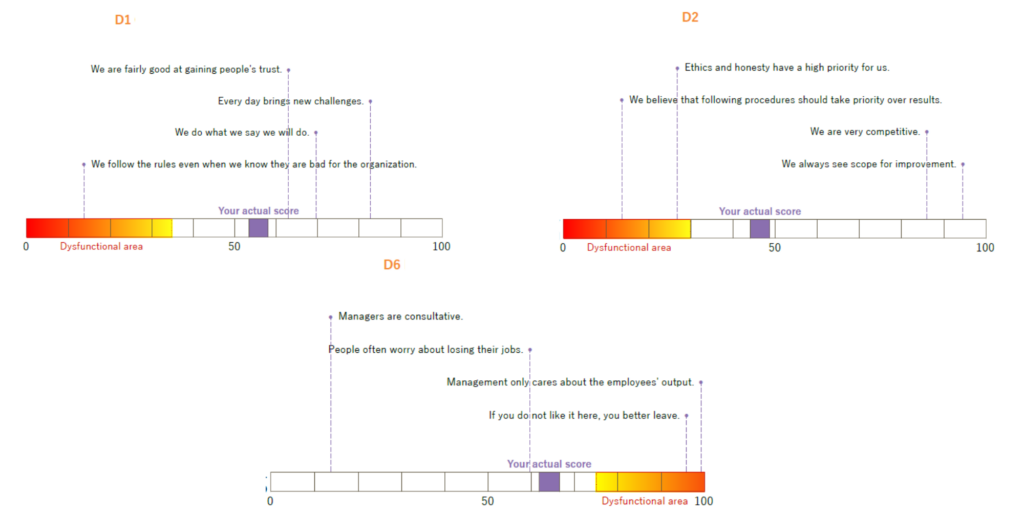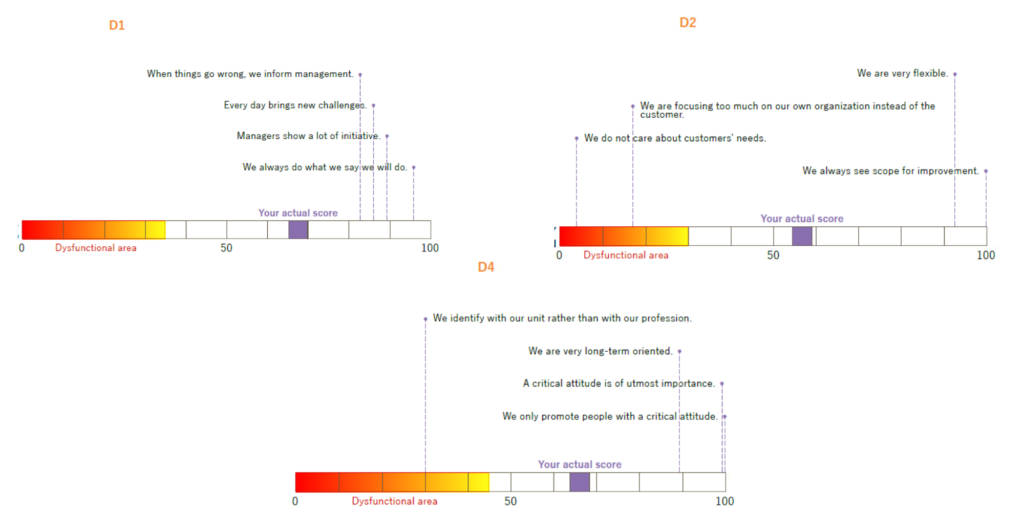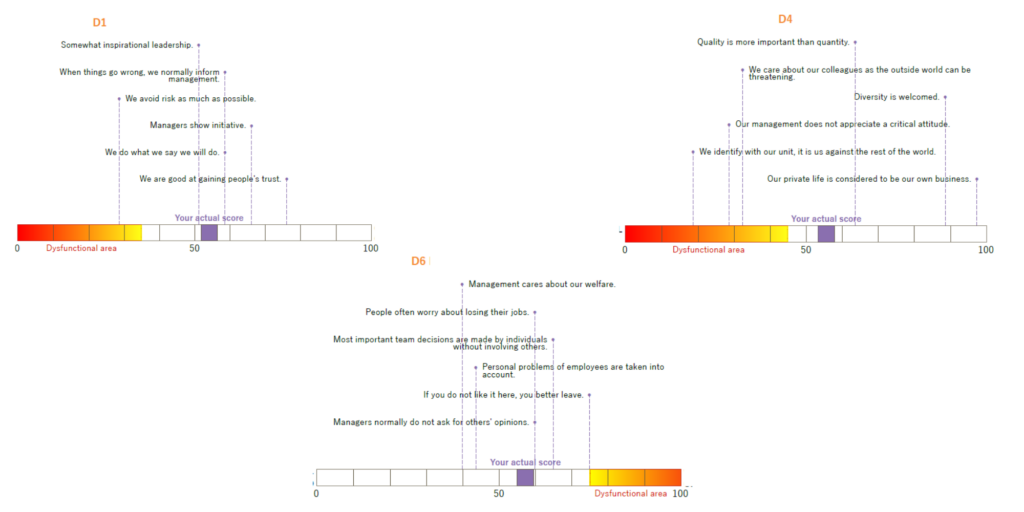
In one of my last webinars I’ve asked the audience the question: “What’s the most important thing to fix when the Organization is not delivering its purpose?”
And below are the answers I’ve got:
From my experience with over 35 Organizational Diagnosis and Transformation projects, each Organization has its own gap. Some gaps are easy to fix, and some are structural and require more energy and time investment, but each of the gaps in each of the cases is hurting the organization to such an extent that it becomes the most important Gap for that Organization at that moment in time.
Let’ go through three cases together:
Case No 1:
Part of the Organizational Diagnosis looked like this:

The top management’s focus was to drive efficiency and collaboration between departments.
Based on the diagnosis I could tell them that the level of micromanagement was unbearable, that they had reapplied a business strategy that didn’t suit them in their region, and that was causing very high attrition in one of their key departments. By adjusting their strategy to fit their environment, they released the unnecessary tensions between the departments, empowered their different functions to start supporting each other, and stabilized the attrition, while the onboarding process didn’t need to be adjusted. The most effort was put into the shift to move away from micromanagement (under guided coaching).
Case No2:
Part of the Organizational Diagnosis looked like this:

In this 2nd case the focus of the top management was to drive efficiency.
The diagnosis showed me that because of their monopolistic position, the way the top management has communicated their desire to drive efficiency didn’t reach their people in a functional way. The professionals had already developed a way to superficially please the management avoiding putting in the extra effort that would actually improve their efficiency. The collateral silo thinking was unpleasant for the top management, but nevertheless, this was just a secondary negative development of their organizational dysfunctionality.
Case No3:
Part of the Organizational Diagnosis looked like this:

The perception of the top management, in this case, was that they needed to improve fast the skills of their professionals, either by investing a lot in internal training or in better recruitment, without having the budget to increase the salaries.
The diagnosis showed me that the communication between the management and the employees was broken, the leader has lost the support of their people, which further triggered the leader to be even harsher, so the attrition was very high, while the onboarding was failing for obvious reasons. The majority of the newly hired were not staying with the company for more than 6 months. After deeper investigation, it turned out that the root cause of this negative spiral was not understanding the local culture and what was important for the professionals locally.
If you want to stay updated regarding such articles, Subscribe below to our Newsletter.
These three cases have the purpose to show that every organization might develop slightly different dysfunctionalities, although nothing extraordinary, or nothing outside of our reach to solve it. The crucial thing is to understand exactly what you have in your organization so that further you can apply the correct solution, most of the time with minimal energy and cost investment but with a huge ROI. Another aspect that is good to understand is the fact that general advice works only very seldom, and not everybody has the time and resources to try solving everything.
A good question would be: is it worth not knowing exactly which “slight dysfunctionality” your organization has? An Organizational Diagnosis done with our researched and validated instrument is fast and very cost-efficient so that trying out something new doesn’t seem so risky in these more challenging times.

0 Comments